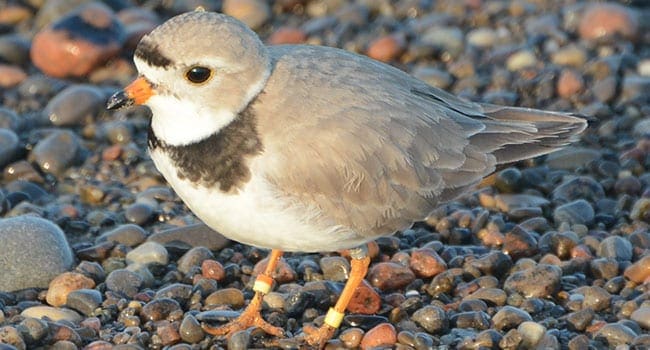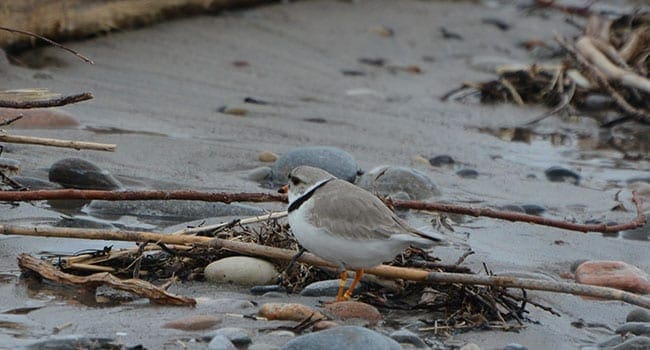aa

Nesting birds like the piping plover face increasing challenges when it rains to excess. Nests are not always as sheltered as necessary when inclement weather persists
 Rain is a good thing.
Rain is a good thing.
It has so many beneficial properties – a source of drinking water for everything, a source of nutrition for plants and micro-organisms, a refreshing relief from the heat, a mechanism to replenish aquifers and lakes, a means to clean overlooked homes and cars, fun for kids of all ages, and a marvel to watch when flash storms darken the skies and the heavens open up!
But too much of a good thing can be bad.
With climate change, it can be a challenging for wildlife, and crops or plants when the rains seem unrelenting.
Sometimes the force and volume of the rain is impressive – almost scary. The sheer weight of the falling rain and the forces associated with the rushing waters of overfilled creeks and rivers can crush and even tear plants out of the ground. Branches can be ripped off and associated winds can snap limbs like toothpicks. Entire trees can even be toppled or turned to kindling if the rain storm is too intense.
Wildlife try to hide from the onslaught, of course, but what’s a tiny organism clinging to a branch to do if it can’t find shelter on the lee of a tree, rock or shrub?
It will be swept away and killed unless it can find refuge quickly.
Most mammals are big enough to withstand the brunt of a storm, but they too must find shelter. If they’re burrow nesters, like chipmunks, they need an escape route – if the tunnels flood and there’s no egress, they will assuredly die in their homes.
Nesting birds face increasing challenges when it rains to excess. Nests are built in many locations and they’re not always as sheltered from above as necessary when inclement weather persists.
If the canopy of the tree or bush in which the nest is built isn’t dense enough, rain will filter (or gush) through and can readily drown the babies if they’re left unprotected.
If the nest is on the ground, then it’s even more likely that flooding will swamp it and the chicks will drown or die of hypothermia.
Even those birds that nest over water (e.g. loons) can be impacted. The water surrounding a nest is there only to protect the nest from intruders – the nest itself must remain dry or the babies won’t make it.
Unlike other situations where a bird can simply go find shelter, if the adult doesn’t sit on the nest to protect the babies, they will assuredly die. So now the adult must put itself in jeopardy so the babies can live – not an ideal situation.
Let me relate two short stories to demonstrate this point.
The piping plover is an endangered species that rarely nests in eastern North America anymore. But for the past several years, a pair has taken up residence at Darlington Provincial Park, east of Toronto, and builds a nest annually.
One year recently, everything was going well, then the skies opened up in June and the area flooded. The babies were in peril as the waves lapped high on the shore, within inches of the nest. Somehow the water stopped rising just in time and the nest was safe. The babies survived and the parents were able to feed and care for them.
The other story also had a happy ending. In our yard, my wife found the nest of an eastern towhee (sort of like a large, very pretty sparrow) in a small Alberta spruce.
Positioned just outside the protection of the eaves of our house, the nest had been rained on relentlessly several times over the course of several days.
But the female stood fast and endured the cold, wet and discomfort to shelter her babies from the rain. Due to her efforts, the babies lived through the storm and eventually fledged safely.
Rain may be beneficial and it may be fun to watch, but it can have devastating effects that do more than flood the countryside and make news headlines.
Hundreds of thousands of plants and animals may perish in every rain storm in our corner of the world.
Geoff Carpentier is a published author, expedition guide and environmental consultant. Visit Geoff online at www.avocetnatureservices.com and on LinkedIn and Facebook.
The views, opinions and positions expressed by columnists and contributors are the author’s alone. They do not inherently or expressly reflect the views, opinions and/or positions of our publication.

